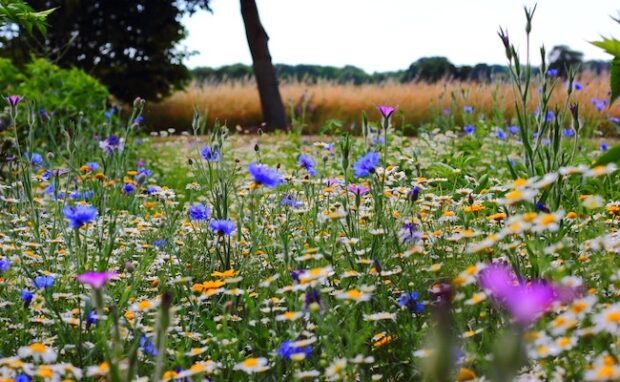Antarctica is growing more flowers, and that’s bad news
Picture a perfect scene; you’ll probably imagine a field of verdant flowers stretching across a sun-drenched landscape. The once frigid, immaculate expanse of Antarctica is turning into that postcard scene, and scientists are worried. The nonprofit Discovering Antarctica says this unusual floral growth signifies worsening climate change.
These strange events would shock and terrify people, but they must also compel us into action. Securing humanity’s future requires us to examine and understand such issues. As a result, we could use our innovation and determination to keep our planet habitable for generations to come. Fortunately, we’ve been making significant strides in sustainable technology.
This article will elaborate on the sudden spread of flowers in Antarctica. Then, I will discuss technologies that could help us secure an eco-friendly future.
What are the implications of more flowers in Antarctica?
News website Indy100 reported there are only two types of flowers native to the extremely cold Antarctica: the Antarctic pearlwort and Antarctic hair grass. Unfortunately, they’re growing at an alarming rate.
University of Insurbia researcher Nicoletta Cannone and her team measured their growth on Signy Island and the South Orkney Islands. Consequently, they confirmed these plants are growing faster because Antarctic ice is melting faster than ever.
They also discovered these spots are hosting denser hair grass and pearlwort populations as the climate becomes warmer. Moreover, the nonprofit organization Discovering Antarctica says temperatures rose by roughly 3°C due to human-induced environmental changes.
The melting ice opened more spaces for the further growth of these plant species. British Antarctic Survey researcher Peter Convey told New Scientist, “The most novel feature of this is not the idea that something is growing faster.”
“It’s that we think we’re starting to see what is almost like a step change or a tipping point,” he added. Also, Scottish Association for Marine Science member Matthew Davey noted, “Accelerated expansion is now clearly evident in the region.”
You may also like: Unique face masks turn into flowers
“This research gives us the first comprehensive data set showing how fast and how dense the plant community may expand,” Davey added. The researchers acknowledged other factors may have spiked Antarctic plant growth.
Yet, those other factors, like the declining fur seal population, are also related to climate change. Moreover, invasive species may spread in Antarctica as it becomes more habitable.
As a result, it could disrupt long-standing local ecosystems. “If we extrapolate what we observed on Signy Island to other sites in Antarctica, a similar process can also occur. This means that the Antarctic landscape and biodiversity could change rapidly,” said Cannone.
What are the latest green technologies?
The sudden growth of flowers in Antarctica alarms scientists, but we are making strides in making our world more sustainable. Numerous innovations offer new ways to reduce our carbon footprint and make our world more habitable.
For example, the French startup Neoplants released genetically modified plants that purify air more efficiently than ordinary houseplants. The company created it from the pothos, the most popular houseplant in the United States.
Believe it or not, Johannes Kepler University researchers used fungi to create computer chips. They prepared a flat sheet of Ganoderma lucidum and applied a thin layer of copper and gold.
You may also like: New industry clouds offer launchpad for innovation
The scientists created batteries, sensors, and a Bluetooth communication module from their mushroom computer chips. They may become a more sustainable alternative to conventional electronic circuits, significantly reducing global e-waste.
Many researchers have also discovered more sustainable battery technologies. For example, the University of California created battery tech that yields pure silicon from sand.
IBM Research created seawater batteries with no heavy metals. Meanwhile, the University of Eastern Finland created energy cells consisting of barley husk ash.
Conclusion
Antarctica is experiencing increased floral growth due to melting ice caps. The new land and heightened temperatures give way to more plant growth.
Fortunately, we are creating more viable alternatives to our destructive products and services. Further research and development could help us lead more sustainable lives.
As a result, future generations will continue to enjoy prosperous lives on Earth. Learn more about the latest digital tips and trends at Inquirer Tech.

